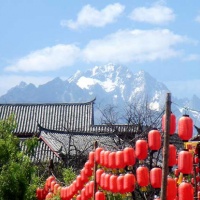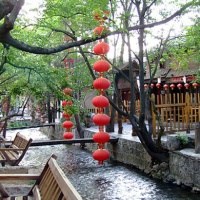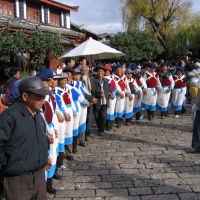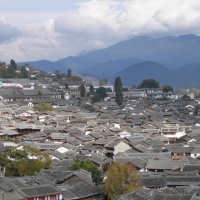- Home Page
- Fact Tours
Our sample tour itineraries of China and China travel packages are sorted by theme and available at competitive prices, you can browse what tours are right for you for your trip to China.
Popular China Tour Packages

Custom Tour Packages to China and Ask Our Experts for Free Enquiry !
- Coach Tours
- Destinations
Beijing, the capital of China. Its art treasures and universities have long made it a center of culture and art in China.
Beijing Top Attractions
Beijing City Tours
Shanghai, the cultural and economic center of East Asia. It renowned for its historical landmarks, the extensive and growing skyline.
Shanghai Top Attractions
Shanghai City Tours
Best China Tours with Shanghai
Xi'an, having held the position under several of the most important dynasties. It is the top destination to explore the facts of Chinese history.
Xi'an Top Attractions
Xi'an City Tours
Best China Tours with Xi'an
Huangshan boasts its culture, beautiful rivers, villages and mountains. It's home to 2 UNESCO World Heritage Sites and the Mecca of photographers.
Huangshan Top Attractions
Huangshan City Tours
Best China Tours with Huangshan
Sichuan is the cradle of the Shu culture, panda, mahjong, teahouse and spicy food. The province ranks first in China by number of UNESCO World Heritage Sites. It is called "the Heaven of Abundance".
Sichuan Top Attractions
Sichuan Tour Packages
Best China Tours with Sichuan
Yunnan, literally means the south of colorful clouds, due to its beautiful landscapes, mild climate and diverse ethnic cultures and traditions, is one of China's major tourist destinations.
Yunnan Top Attractions
Tibet, the nearest land to the sky, is known for its breathtaking landscape, splendid culture, art, buildings, and mysterious religions.
Tibet Top Attractions
Tibet Tour Packages
Best China Tours with Tibet
Explore the lost civilizations by riding a camel! Travel across the Gobi and the desert, and over the high mountains. Our Silk Road tours including different sections of the Silk Road in China.
Silk Road Top Attractions
Silk Road Tour Packages
Best China Tours with Silk Road
Guilin, an internationally-known historical and cultural city, has long been renowned for its unique karst scenery. Its vicinities are the paradise of hiking, caving, rafting, biking and countryside exploring.
Guilin Top Attractions
- China Facts
- China Hotels
- Travel Photos
Lijiang Old Town
Lijiang Ancient City is also known as Dayan Old Town, located in Lijiangba, Yunnan Province, is an ancient town inhabited mainly by the Naxi minority people. The town was founded in 1127. The roads in the town are paved with colored pebbles produced in Lijiang, and there are many stone bridges and memorial archways built during the Ming and Qing dynasties. Most of the residences are made of earth and wood. Palace murals depicting religious themes were painted during the Ming dynasty. The traditional Dongba Culture of Naxi ethnic group has been preserved in Lijiang.
Founding History
In AD 1256, Kublai Khan, grandson of the notorious Genghis Kahn and the founder of the Yuan (Mongol) dynasty, set out on an expedition with his troops to conquer Yunnan. After crossing the Jinsha River they came to what is now Lijiang, establishing an administrative office and later the Lijiang Military and Civil Protectorate. From then on the city became known as Lijiang.
Why Lijiang Old Town Has No City Wall?
The people who inhabit Lijiang have always been the Naxi minority and from the time of its settlement, the hereditary rulers of the town were all members of the Mu family. Lijiang is the only ancient town in China that not to be surrounded by city walls, and common folklore has it that the Mu family name might be the reason for this: To have Mu (木- a Chinese character means wood) surrounded by a Kuang (口-a Chinese character means a frame or surrounded by something) would be Kun (困- means predicament or siege), therefore, the town was left without a protective wall.
 What to see in Lijiang Old Town?
What to see in Lijiang Old Town?
Lijiang was listed as the world cultural heritage site by the UNESCO for its unique things such as ancient architecture, old business sites, ethnic folk customs, and the mystic Dongba Culture.
1. Architecture
Lijiang has preserved many ancient buildings whose construction began over 800 years ago. Most of the dwellings are structures made of brick and wood with carved doors and painted windows. The town has a very unique layout. At the heart of the town lies Sifang Street (Sifang Jie), with the entire city spreading out in all directions from that point the street is lined with small shops and residences. From this street all other streets spiral outwards, and five major ones connect all the road and lanes in the town.
The town is also crisscrossed by narrow canals and rivers. Architectural styles are borrowed from the Han, Tibetan, and Bai people. The streets and houses have been built in such a way as to follow the lay of the land and flow of the rivers. Transportation is facilitated by more than 350 tiny stone bridges - such a large number as to warrant the name City of Bridges. Many of the bridges were built during the Ming and Qing dynasties.
 The folk houses of Lijiang Old Town display a combination of architectural styles resulting in two unique structural styles known as one courtyard with five skylights and three rooms with one screen wall. The latter of these styles is more commonly used in Lijiang. The main room of the house, flanked by the left and right wing-rooms, combines to form a three-sided courtyard with a screen wall positioned opposite the principal room.
The folk houses of Lijiang Old Town display a combination of architectural styles resulting in two unique structural styles known as one courtyard with five skylights and three rooms with one screen wall. The latter of these styles is more commonly used in Lijiang. The main room of the house, flanked by the left and right wing-rooms, combines to form a three-sided courtyard with a screen wall positioned opposite the principal room.
The main room often faces south and is slightly higher than the others, as it is reserved for senior members of the family. The east and west wing-rooms are for junior members, each room contains three partitions and two stories. Apart from the houses in the downtown, there are two famous complexes of the ancient folk houses: one is the Baisha Folk House Complex which is only 8 km from the downtown; the other is the Sushuihe Fold House Complex which is only 8 km from the downtown. These houses have strongly vernacular characteristics their architectural styles are very different from those of the other Chinese areas.
The other style known as one courtyard with five skylights has the rooms arranged slightly differently so that the principal room, the servants' room and the wing-rooms form a closed courtyard. Besides the main skylight in the center, there were four smaller ones positioned at the four corners. The courtyards were often feats of artistic eloquence, decorated with flowers and miniature trees and elegant pillars.
Besides the common houses, Lijiang also boasts the Mu Residence (or Muwangfu) and many religious buildings, the latter located eight kilometers north of the ancient city. These temples are particularly remarkable for their murals, painted in the 13th and 14th centuries, and discovered in thirteen of the temples, including the Liuli Temple (the Glazed Tile Temple). The murals blend classical Tibetan Buddhist stories with Taoism, and feature depictions of Central China, Tibet and Dongba.
2. Old Business Roads and Site
Lijiang was an important trade route on the ancient Silk Road, primarily between Yunnan and Tibet, making it a center of commercial and cultural exchange. Many ethnic groups have contributed to the town's prosperity, including the Tibetans, the Hans, the Bais, the Yis and the Naxis. The later Tea and Horse Roads, two other ancient trade routes, converged in Lijiang's famous Sifang Street (Square Street).
During the early years of the Yuan dynasty about 1000 families inhabited Lijiang Ancient Town. The town continued to grow and reached its peak during the Ming (1368-1644 A.D.) and Qing (1644-1911 A.D.) dynasties. Visiting these old business roads or site, you will know something about the ancient southwest China business; you will be told many true stories about the businessmen and their horses or donkeys along the ancient steep Tea and Horse Roads...
3. Ethnic Folk Customs and the Mystic Dongba Culture.
Lijiang is usually selected as one of the top places to see Chinese ethnic folk customs because the many minorities live in this picturesque town such as the Bai, the Tibetan, Mosuo, the Yi and the Naxi etc. Especially you can learn some about the Dongba culture of the Naxi people, this ethnic group still keep and use the oldest pictographs in the world, they have the mystic Dongba Religion, the primitive or ancient dances, tuneful Ancient Naxi Music, unique garments and a lot of other things that the world people want to discover.
Design and incorporate the Lijiang Old Town into your Yunnan tour here!
Questions & Comments
Home | About Us | Partnerships | Terms & Conditions | Privacy & Security | Payment Guide | Resource Links| Sitemap
Email: contact@chinafacttours.com, Tel: +86-773-3810160, Fax: (+86) 773-3810333
Copyright © 2008-2020 China Fact Tours. All rights reserved
![]()










